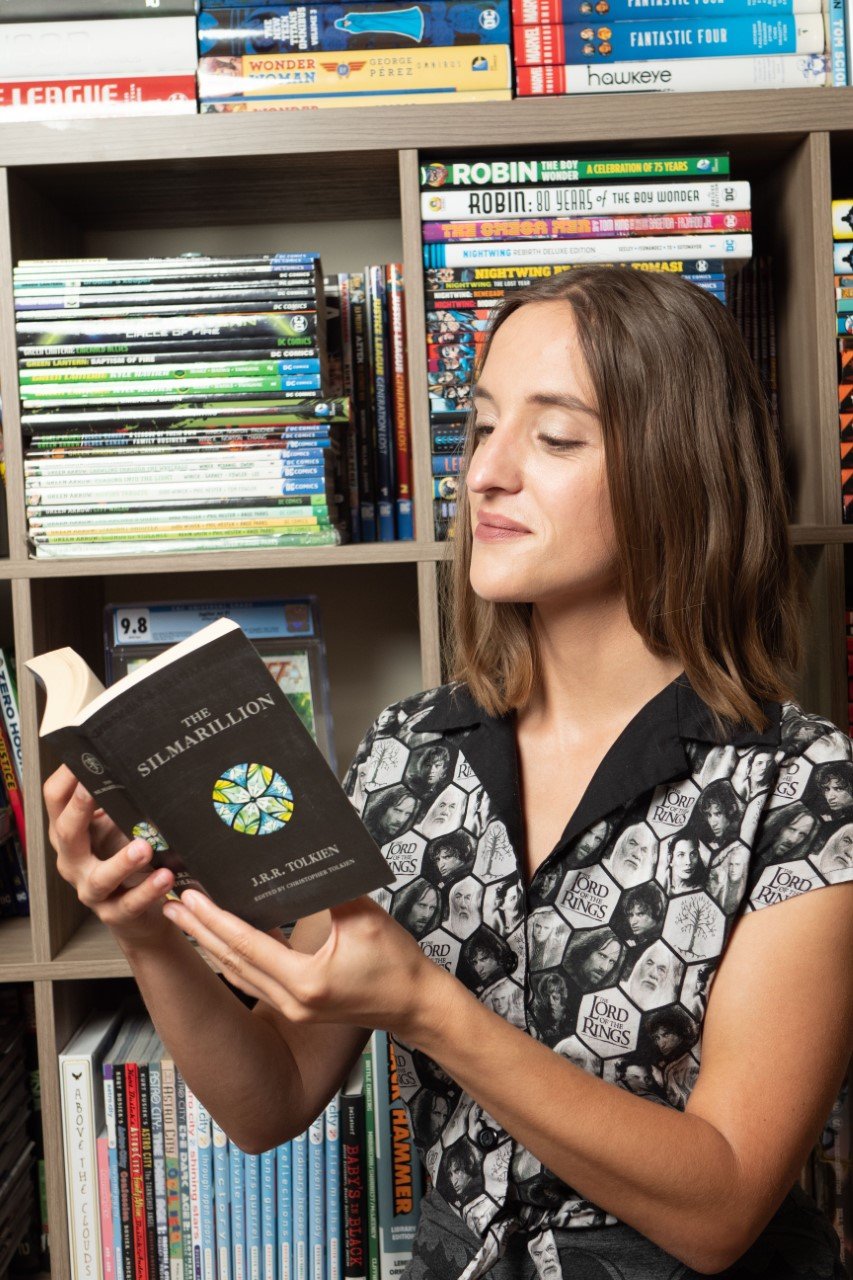December marked the 20th anniversary of The Lord of the Rings: The Fellowship of the Ring. The first installment in a trilogy that would change Professor Ashley’s life. Of course we had no choice but to highlight the anniversary in a Geek History Lesson episode of our own. We did a Fellowship of the Ring Movie Retrospective episode. Planning out episodes for this year we know we are going to be covering The Two Towers and two years from now Return of the King. It’s pretty rare in production of the podcast we know something is looming on the horizon.
Other topics similar?
When The Batman was first announced
Knowing No Time to Die would be Daniel Craig’s final James Bond movie there would be an entire series built around the famous super spy
A new Doctor Strange movie will always call for a new episode and for Stevie and Clea to make an additional appearance!
Not a ton of topics. So, when something we’re as passionate about as Ashley is about Lord of the Rings there’s no way we’re going to pass up an opportunity to talk about it. Our best Geek History Lesson episodes are topics we care the most about: Nightwing, Fantastic Four Part 1, and Part 2 , et cetera.
photo credit: Cameron Rice Photography
When The Late Show with Stephen Colbert threw this gem out into the world just in time for the holiday season we knew we wanted to write a blog worthy of standing up to this genius:
Let’s start with a bold claim: the Lord of the Rings trilogy illustrates the value of adaptation.
Repeatedly over the years we have discussed adaptation. How close to the source material does an adaptation need to be? (we really get into this during our His Dark Materials episode.
Generally speaking, we agree: adaptation should take creative liberties. It should change things. It is the job of the adapter to find what in the source material serves the new medium best. Peter Jackson, Frank Walsh, and Philippa Boyens share screenplay credits on all three Lord of the Rings movies with Stephen Sinclair receiving credit for The Two Towers as well. The singular vision this hivemind shared when tackling the incredibly complex world imagined by J.R.R. Tolkien feels of the same tone across all three installations. They excel at knowing what is important to enhance:
For example - Arwen needs to play a more active role in The Lord of the Rings movies. Your opinion on the success of these changes may vary, but having Arwen be more than Aragorn’s reward for fulfilling his kingly destiny is absolutely the right move for Undomiel.
The writing team also knows which story aspects are integral - even legendary - in the world of the book mythology, but may not work as clearly on film:
For example: Tom Bombadil and the Burning of the Shire. Both are fan favourite moments. They both highlight completely different aspects of the hobbits as a society, as a race of beings, and of the four hobits who are at the center of this epic tale (Frodo, Sam, Merry, Pippin). With Tom Bombadil they are innocent and young. They are protected by an elder in a warm, sunny environment. By opposition, when the Shire burns the four hobbits become heroes and lead the defense of their people with the wealth of knowledge and experience they now have at their back following the events of the previous books.
It is complex binds such as navigating these moments, deciding whether or not they ought to be brought to life, which led Hollywood to believe The Lord of the Rings was “unadaptable” for decades and decades until this powerful force from New Zealand came on board. Their brilliance extends to the design element - mirroring optical illusions with visual effects. Models and computer generated images. The marriage of the real and the purely digital lends The Lord of the Rings a grounded feeling closer to other contemporary film classics such as Jurassic Park rather than the Hobbit Trilogy made a decade later by the same creative team.
There is a real difference between the Rivendell of the early aughts and the Rivendell of the mid teens.
Rivendell, The Fellowship of the Ring
Rivendell, The Hobbit
The cast of actors - many of whom have stage training and long theatre careers - carry the weight and complexities of the script. If you missed our Geek History Lesson Extra episode where we dove into Actors Who Almost Appeared in the Lord of the Rings then you simply can’t imagine the names which were attached to these projects over the years. People whose personalities and previous careers could have overshone the story of the nine members of the Fellowship of the Rings. Arguably, Sean Bean was the most famous cast member having played Alec Trevelyan a.k.a. 006 in GoldenEye.
In The Fellowship of the Ring Lady Galadriel say to Frodo:
For Ashley, this line is the emotional core of what The Lord of the Rings is trying to tell us. Particularly if you are a small person watching these movies for the first time, the power of this line, and the ethos Tolkien’s work embodies swirling around this theme accompanies all of the incredible creative and technical aspect and leaves audiences with the greatest film trilogy fantasy has ever seen.



